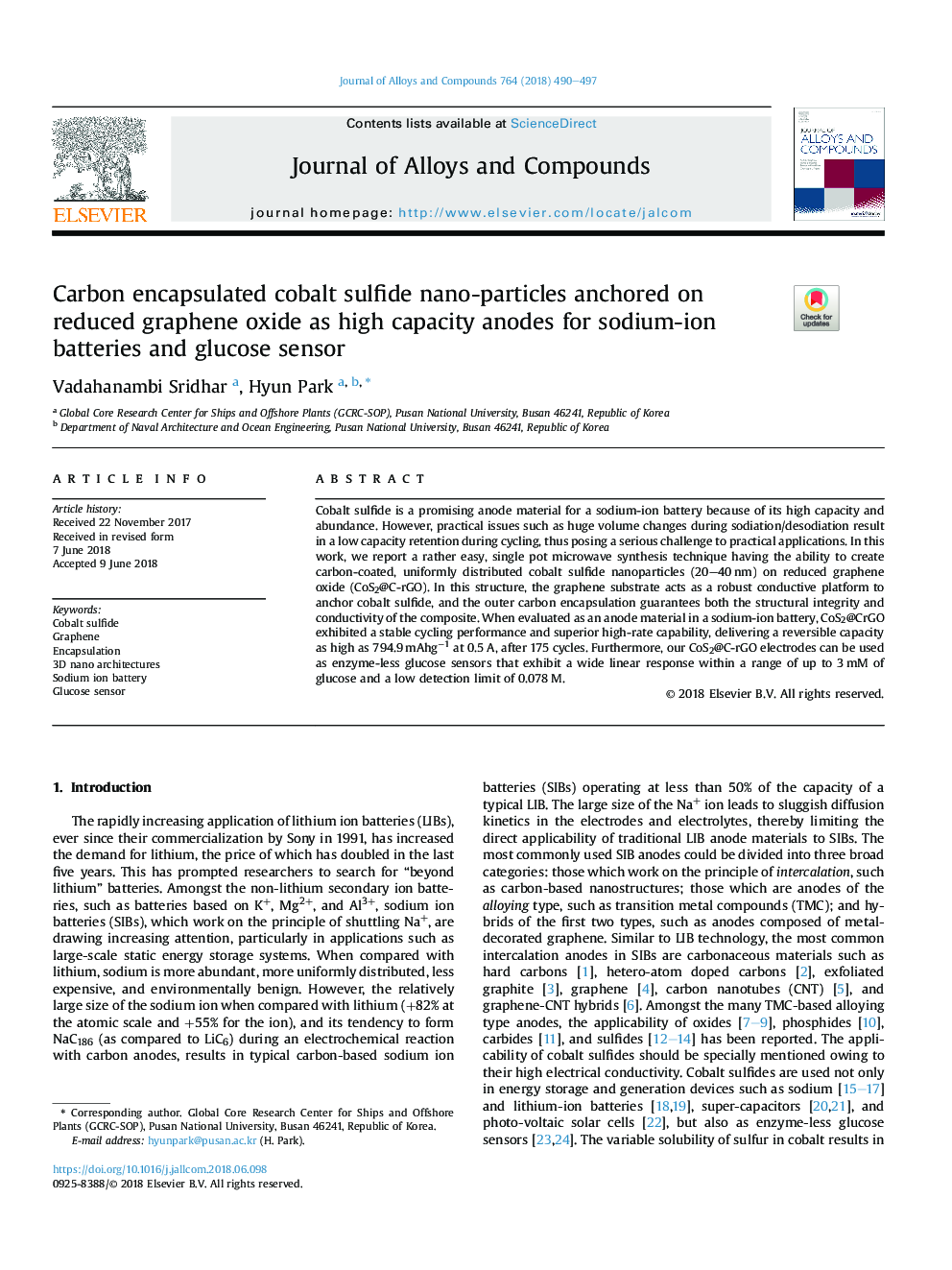| Article ID | Journal | Published Year | Pages | File Type |
|---|---|---|---|---|
| 7990688 | Journal of Alloys and Compounds | 2018 | 8 Pages |
Abstract
Cobalt sulfide is a promising anode material for a sodium-ion battery because of its high capacity and abundance. However, practical issues such as huge volume changes during sodiation/desodiation result in a low capacity retention during cycling, thus posing a serious challenge to practical applications. In this work, we report a rather easy, single pot microwave synthesis technique having the ability to create carbon-coated, uniformly distributed cobalt sulfide nanoparticles (20-40â¯nm) on reduced graphene oxide (CoS2@C-rGO). In this structure, the graphene substrate acts as a robust conductive platform to anchor cobalt sulfide, and the outer carbon encapsulation guarantees both the structural integrity and conductivity of the composite. When evaluated as an anode material in a sodium-ion battery, CoS2@CrGO exhibited a stable cycling performance and superior high-rate capability, delivering a reversible capacity as high as 794.9â¯mAhgâ1 at 0.5 A, after 175 cycles. Furthermore, our CoS2@C-rGO electrodes can be used as enzyme-less glucose sensors that exhibit a wide linear response within a range of up to 3â¯mM of glucose and a low detection limit of 0.078â¯M.
Related Topics
Physical Sciences and Engineering
Materials Science
Metals and Alloys
Authors
Vadahanambi Sridhar, Hyun Park,
